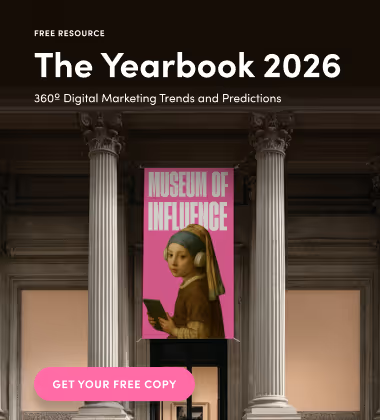Social media marketing helps education institutions reach prospective students through authentic content, real-time engagement, and valuable resources. From student takeovers to live Q&As, schools can build trust and visibility where their audience already spends time—online.
Connection is everything in today’s digital world. For educational institutions looking to grow, speaking your audience’s language is key, and right now that language is social media.
From short, snappy videos to live Q&A sessions, social media marketing isn’t just a nice-to-have anymore—it’s a must. Want to stay relevant, visible, and trusted? Meet prospective students where they already hang out: online. Make those connections happen!
The Shift to Digital Engagement
Digital marketing has completely changed how schools connect with students. Gone are the days when newspaper ads or open days were enough. Before making any big decisions—like where to study—Gen Z and younger millennials head straight to Instagram, YouTube, TikTok, and LinkedIn. If you’re not online, you’re missing out on where they’re looking!
Having a strong online presence makes schools feel more credible and, let’s be honest, more accessible too. When potential students see regular posts, compelling stories, and genuine interactions, it builds trust. It’s like the school is alive, up-to-date, in tune with the modern world, and ready to connect.
FAQs
How can schools attract more students through social media?
Sharing authentic content like student stories, campus life videos, and academic resources, schools can build trust and spark interest among prospective students.
Which social media platform is best for student recruitment?
It depends on your goal: TikTok for engagement, Instagram for visuals, YouTube for long-form content, and LinkedIn for academic and alumni stories.
Should schools post every day?
Not necessarily. Posting consistently (three to five times per week) is more important than daily posting. Focus on quality, relevance, and engagement.
What kind of posts perform best with prospective students?
Behind-the-scenes videos, student takeovers, live Q&As, and real student experiences typically drive the most engagement and trust.

Marketing Strategies for Higher Education
One powerful way to connect with students is by offering useful, free educational content. This builds trust before enrollment even begins. For example, some universities share free webinars, short guides, or open course snippets.
Another approach is sharing student-created content. These might include study tips, daily campus life videos, or even insights into different majors. Audiences love seeing real stories from real students. It helps them imagine their own journey.
Social media marketing for educational institutions becomes much stronger when students themselves act as informal ambassadors. Their posts and stories show authenticity that no official ad can match.
Where Students Get Study Notes
Students today look for more than just flashy videos or photos of campus life. They also seek practical tools and resources to support their studies.
Pages that offer study notes, tips, and academic support gain more engagement than those that focus only on self-promotion. This is why Edubirdie is an important resource. This tool provides students with access to a wide range of shared study materials that help them prepare for exams or complete assignments.
By linking to resources like this, educational institutions show they care about student success, not just enrollment numbers. Sharing useful academic content builds trust and encourages more students to follow, engage, and eventually apply.

Higher Education Marketing Strategies: Engagement Ideas
Here are five proven content types that support digital marketing for educational institutes:
- Day-in-the-Life Videos: Several brief clips that comprise an average day on campus.
- Student Takeovers: Let students take over Instagram Stories or TikTok for a day.
- Live Q&A Sessions: Answering questions about courses, dorms, or scholarships.
- Alumni Spotlights: Success stories that show the real-world value of a degree.
- Behind-the-Scenes: Fun moments (library tours, canteen visits, etc.).
These ideas build community. They also encourage interaction, which boosts visibility thanks to social media algorithms.
Why Social Media Works Better Than Traditional Ads
Social platforms allow for real-time feedback and a sense of community that printed flyers or brochures can't match. It’s not just about broadcasting; it’s about building conversations.
Platforms That Matter
Picking the right platform is key. Think of it like choosing the right tool for the job. Every channel has its own vibe and purpose, so knowing where to focus makes all the difference.
- Instagram is perfect to show visual stories and brief news on the campus.
- Tik Tok is effective in terms of humor, trends, and connecting with young people.
- LinkedIn is most suitable to show academic studies, graduate accomplishments, and career records.
- YouTube is a platform better-suited to longer-form material, such as course previews or interviews.
- Facebook hasn’t lost its worth, particularly among parents and global audiences.
Educational institutions with an online presence on at least two or three of these platforms can create closer ties, have wider reach, and maintain a consistent message.
Social Media Platform Cheat Sheet for Higher Ed
Measuring Results
Success isn’t just about likes and shares. Schools must track metrics such as:
- Engagement rate (comments, reactions)
- Website traffic from social platforms
- Click-throughs to application pages
- Growth in followers from target countries or demographics
- Sign-ups for newsletters or webinars
These metrics are like a cheat sheet to understand how your social media marketing for educational institutions is performing. They shine a spotlight on what’s working, what’s not, and where your strategy could use a little extra TLC. Think of them as your guide to smarter, sharper marketing moves.
Schools that embrace the power of online connections aren’t just keeping up—they’re leading the way. With a smart, well-crafted social media strategy, educational institutions can showcase their values, build trust, and inspire students to take the next step.
In today’s competitive world of higher education, it’s the schools that communicate effectively, digitally, and authentically. Because let’s face it: students are drawn to institutions that speak their language and meet them where they are (hint: online!).



